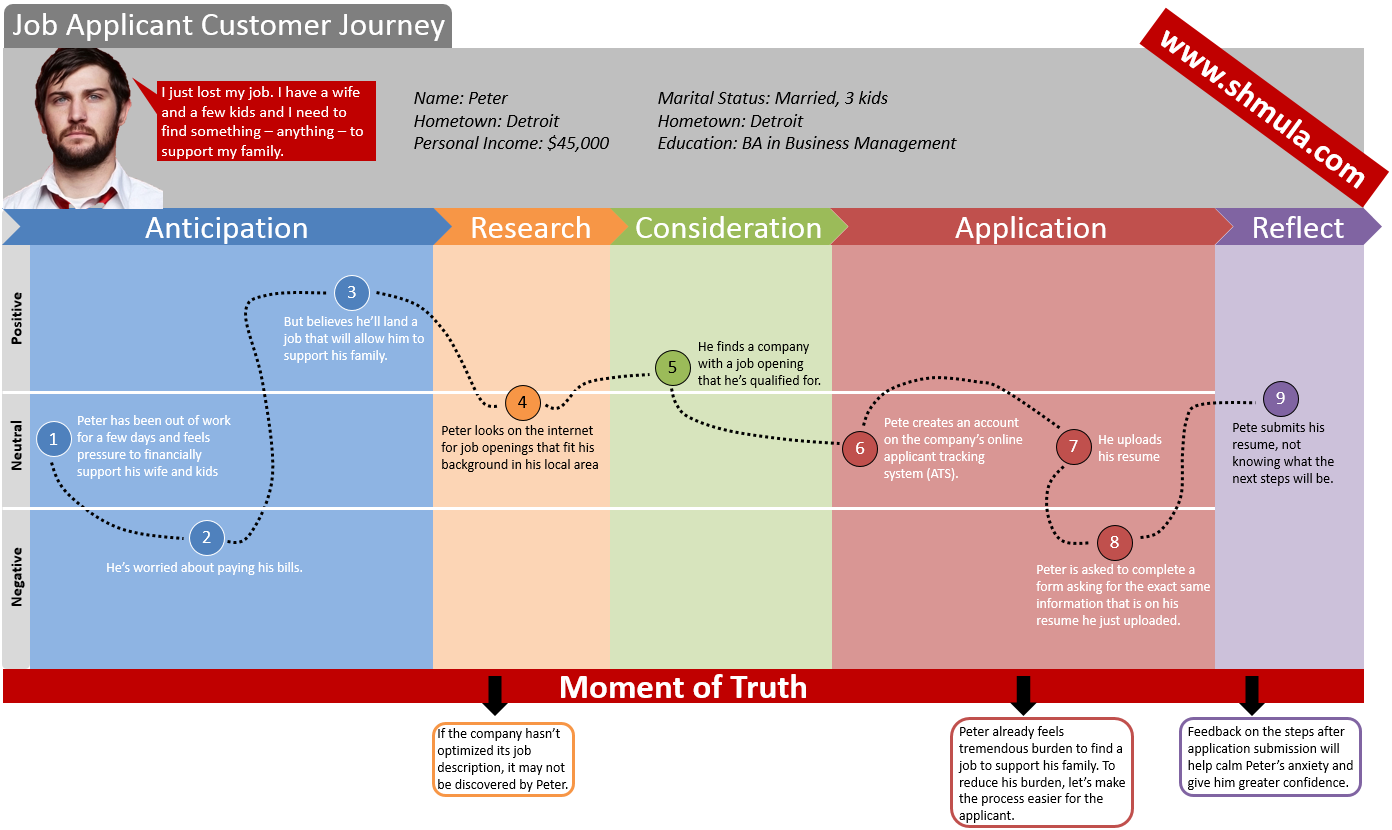This article explains the waste of overprocessing and how it impacts the customer experience. I also show how overprocessing is conveyed using a customer journey map, which you can download at the end of the article.
I once heard a story about a husband who buys his wife flowers every year for their wedding anniversary. This husband goes to the same flower shop to buy his flowers. When this husband asked the flower shop owner about how business was going, the flower shop owner responded
Buying flowers for your wife has nothing to do with flowers. It has everything to do with marriage extension. The marriage extension business is booming.
In this husband’s mind, it was just a business of selling flowers. In the flower shop owner’s mind, buying flowers for your wife for a wedding anniversary is about extending your marriage. That. is. a. big. difference.
It’s More Than Perspective
It’s more than just how we look at things. Let me tell you another story to illustrate.
A few weeks ago, I took one of my kids to the doctor’s office. It seems like whenever I go to the doctor’s office, I repeat the same information that I know I’ve already given. You see, with as many kids as I do (I have 9 children), I’m at the doctor’s office A LOT.
Why am I asked the same set of questions everytime I’m at the doctor’s office?
Waste of Overprocessing
One observation I have is that the waste of overprocessing is literally everywhere. Most times, we expect it and we just deal with it. On the one hand, the most harm providing answers that we know we’ve already given is annoyance. But, could there be more psychological harm than we think?
Let’s take a common situation in our economy: losing your employment. getting fired. losing your job. Now, psychologically, when someone loses their job – especially if that person has a family to support – can be very stressful. So, that person has left the ranks of the employed to the ranks of the unemployed. He’s now a job seeker.
Let’s walk through the journey of a job seeker. As I walk you through his journey, I want you to notice the subtle but very important difference between a customer journey map approach versus the value stream map or even a process map.
Customer Journey of a Job Applicant
Customer Persona
Let’s call our job applicant “Peter”. He lives in Detroit and earns an income of $45,000 USD per year. He’s married with 3 kids and has a bachelor’s degree in business management. One concern that is top of mind for him is that he feels a strong burden to support his family. He’s willing to do anything – get any job – to be able to support his family.
Job Candidate Customer Journey
- Peter has been out of work for a few days and feels pressure to financially support his wife and kids.
- He’s worried about paying his bills.
- But, he believes he’ll land a job that will allow him to support his family.
- Peter looks on the internet for job openings that fit his background in his local area.
- He finds a company with a job opening that he’s qualified for.
- Pete creates an account on the company’s online applicant tracking system (ATS).
- He uploads his resume.
- But wait – Peter is asked to complete a form asking for the exact same information that is on his resume that he just uploaded.
- Pete submits his resume, not knowing what the next steps will be.
On the face of it, it seems like a harmless enough process. If one created a value stream map, then the clear area for improvement would be to reduce or eliminate asking the job candidate the same information they he or she just entered by uploading their resume. But, that approach misses a critical area of improvement: the customer’s state of mind.
Peter is stressed. Asking him to enter the same information he just entered doesn’t help him feel better. If we remove the irritation, that will help.
But, he’s still stressed.
This can be an opportunity to make a simple process that every candidate goes through actually a magical one.
How?
What if after Peter submits his online job application, the “Thank You” page has a one line sentence that said
“We know that the job search process can be stressful. Thanks for applying for this position with our company.”
Simple. But, it conveys empathy and this simple job application process could be turned into a potentially magical one.
This also marks one of the clear differences between a customer journey map and maps as used in Lean or Six Sigma.
Customer Journey Map Template Download
Interested in a free template download of a customer journey map? Go here:
The post Waste of Overprocessing is Everywhere appeared first on shmula.

